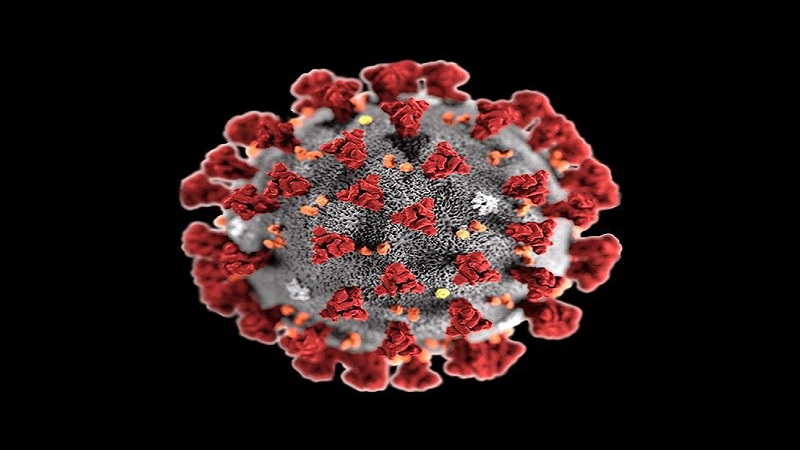 Image Courtesy:labourstart.org
Image Courtesy:labourstart.org
It is no secret that Native American populations have been historically marginalized and oppressed in the United States. Even today they remain under-served when it comes to healthcare, education and basic infrastructure. This has compounded their woes in the battle against the Coronavirus.
According to a December 2018 report by the US Commission on Civil Rights titled Broken Promises: Continuing Federal Funding Shortfall for Native Americans, there is a huge disparity in per capita federal spending on healthcare for Native Americans as opposed to the rest of the US. The report says, “In 2016, IHS health care expenditures per person were only $2,834, compared to $9,990 per person for federal health care spending nationwide.335 In 2017, IHS health care expenditures per person were $3,332, compared to $9,207 for federal health care spending nationwide.”
It is noteworthy that after centuries of facing persecution and genocide at the hands of European immigrants, many Native American tribes like the Navajo people signed treaties with the federal government giving up their land in exchange for funding for healthcare, infrastructure and other promises of development. While they were granted relative autonomy in governance, they are to this day treated as second class citizens.
All campaigns about how to battle the Coronavirus focus on the importance of handwashing. But when almost half of the 3.5 lakh people in the Navajo Nation, that is spread across 17 million acres in North-East Arizona, South-East Utah and North-West New Mexico, don’t even have access to adequate and regular water supply, something as basic as handwashing becomes a challenge!
According to ABC 4, as of April 24, 2020, this region had 1,540 confirmed cases of Covid-19 and 58 deaths. “Were it a US state, it would fall at No. 3 for the number of confirmed coronavirus infections per capita, behind New York and New Jersey,” says Vox. The publication also says that co-morbidity on account of a high prevalence of pre-existing conditions such as obesity, asthma, heart disease and diabetes have contributed to a high death rate.
The Indian Health Services (IHS) that was set up in 1955 to provide healthcare to members of different tribal populations, has also remained historically underfunded. Even when funds are allocated, they caught up in red tape. Vox reports, “On March 6, Congress allocated $40 million in coronavirus aid to Indian Country through the Centers for Disease Control and Prevention (CDC), which was supposed to pay for surveillance of the virus, laboratory capacity, infection control, and other initial preparedness and response activities. Congress also allocated another $64 million in aid directly to the Indian Health Service last week. On March 20, the US Department of Health and Human Services, which oversees both the CDC and the IHS, announced it was ready to disperse $80 million in funding from the first two relief packages to tribes, tribal organizations, and Urban Indian Organizations. However, sources familiar with the IHS said as of March 21, 98 percent of tribal clinics have not yet received funds from the initial allocation because of the lack of bureaucratic mechanisms to distribute funds from the CDC.”
NPR reports that there is an acute nursing shortage on the Navajo Nation, and the tribe is desperately lacking in equipment. But what is most chilling is that there are not enough strike teams or contact tracers to get a complete picture of how far COVID-19 has spread on the Navajo Nation.
Meanwhile, half way across the world on the continent of Africa, yet another group of people who have been used, abused and then discarded after robbing them of their wealth and resources by a series of colonial powers, face a deadly tripple threat from the Coronavirus, Malaria and hunger.
The Washington Post reports that there has been a 40 percent spike in Covid-19 cases on the continent in just the last week. There are over 25,000 confirmed cases and the death toll has exceeded 1200. Lockdowns by different nations have already put innumerable people out of work and this loss of livelihood is bound to have an impact on their health. Lack of clean water, high population density in urban areas and limited capacity for testing are some of the challenges being faced by many African nations.
The Associated Press reported that WHO’s recent report painted a grim picture for Africa, saying warning that the virus could kill more than 300,000 people and push 30 million into desperate poverty. This would in turn exacerbate the problem of hunger, thereby making malnutrition a major co-morbidity factor. According to John Nkengasong, director of the Africa Centers for Disease Control and Prevention, Africa also has a “very, very limited” and “very, very strained” testing capacity.
Meanwhile, Sub-Saharan Africa, that accounts for over 90 per cent of the cases of Malaria worldwide also has that working as a co-morbidity factor in Covid-19 deaths.